Is The Alfa Romeo Giulia GTAm Really Worth Twice As Much As A Quadrifoglio?

Pros
Cons
Perhaps the biggest stumbling block I’ve had with the Alfa Romeo Giulia GTA and GTAm models is their price tags. It works out at £150,000 for the GTA going by current exchange rates and £154,000 for a GTAm.
That makes a GTAm getting on for £30,000 more than a Porsche 911 GT3, and not far off Mercedes-AMG GT R money. These are, unlike the GTA/GTAm, purpose-built sports cars. Perhaps a bigger issue for these cars is the Giulia Quadrifoglio. It’s already one of the most exciting super saloons you can buy, and the starting price is less than half that of the GTA. Is it really worth splurging that much more on a version of Giulia Q which is barely any faster and less easy to live with?

As it happens, we’re currently running a Giulia Quadrifoglio as a long-term test car, so we’re in a very good place to answer that question. And what’s worth pointing out right away is that while the starting price might be a fraction of the GTA’s at £67,195, you can add myriad options, many of which - like carbon ceramic brakes - are standard on GTA/GTAm. The only extras on the GTAm are a series of fancy liveries (around £13,800 each), a personalised car cover (£1,300) and special track safety gear including a helmet and race suit. ‘Our’ Quadrifoglio on the other hand has over £16,000 of kit added to it, inflating the price to £83,295. The jump to the GTA/GTAm isn’t quite as big as you might think.
See also: Alfa Romeo Giulia GTAm Review: Ferocious, Nonsensical, Superb
So, what’s the premium buying you? Quite a lot, as it happens. First off, a pokier engine producing 533bhp up from 503, for which Alfa hasn’t merely turned up the boost pressure. There are additional changes including new connecting rods, additional piston oil jets and an uprated oil cooler.

On the chassis front, the track widths have swollen by 50mm front and rear, and the whole car sits lower on stiffer springs and retuned adaptive dampers. The wheels have grown by an inch to 20mm, and they’re centre-locking - a first for a saloon car. And while the Giulia Q’s 19s are wrapped in (admittedly very good) Pirelli P Zero Corsas, the GTA/GTAm go one better with Michelin Pilot Sport Cup 2s for its 20s.
Adding to the Quadrifoglio’s carbon fibre bonnet and optional carbon roof, the GTA and GTAm get a front bumper, wheel arches and a rear diffuser all made from CF. The GTAm goes further by swapping the glass side windows for polycarbonate and binning the rear seats for a total weight loss of 100kg.
The final piece of the puzzle is aero. Assuming you go for the slightly lairier GTAm, you get the new rear diffuser, a front splitter, side skirts and a huge high-level rear wing all made from carbon fibre. Both the splitter and the wing are manually adjustable with three settings - Street, Low Downforce and High Downforce.

All of this feels most dramatic not when switching from the Quadrifoglio to the GTAm, but the other way around. This once thrilling, feisty super saloon suddenly feels muted, soft and disconnected. Yes, you have that same super-fast steering (with the same ratio as a Ferrari 458, as is often pointed out), but in the Q, it’s not backed up by much in the way of meaningful feedback. The GTAm by contrast is constantly communicating what the front end is up to.
Both cars feature carbon fibre-tipped Akrapovic exhaust systems (a £3250 option on the Quadrifoglio) but they aren’t the same. The Q’s setup features quad tailpipes with each pair mounted to the sides of the rear, whereas the GTAm has them poke through the middle of that giant carbon fibre diffuser. They operate in different ways, too.
The Q’s lungs use an RPM-dependent setup, with the butterfly valves not opening until you reach higher engine speeds. In the GTAm, they’re open all the time in the Dynamic and Race modes and coupled with the lack of rear seat and the removal of some of the sound deadening, the noise is incredible. With every full throttle application, the throaty bark of that V6 rattles around the cabin gloriously.
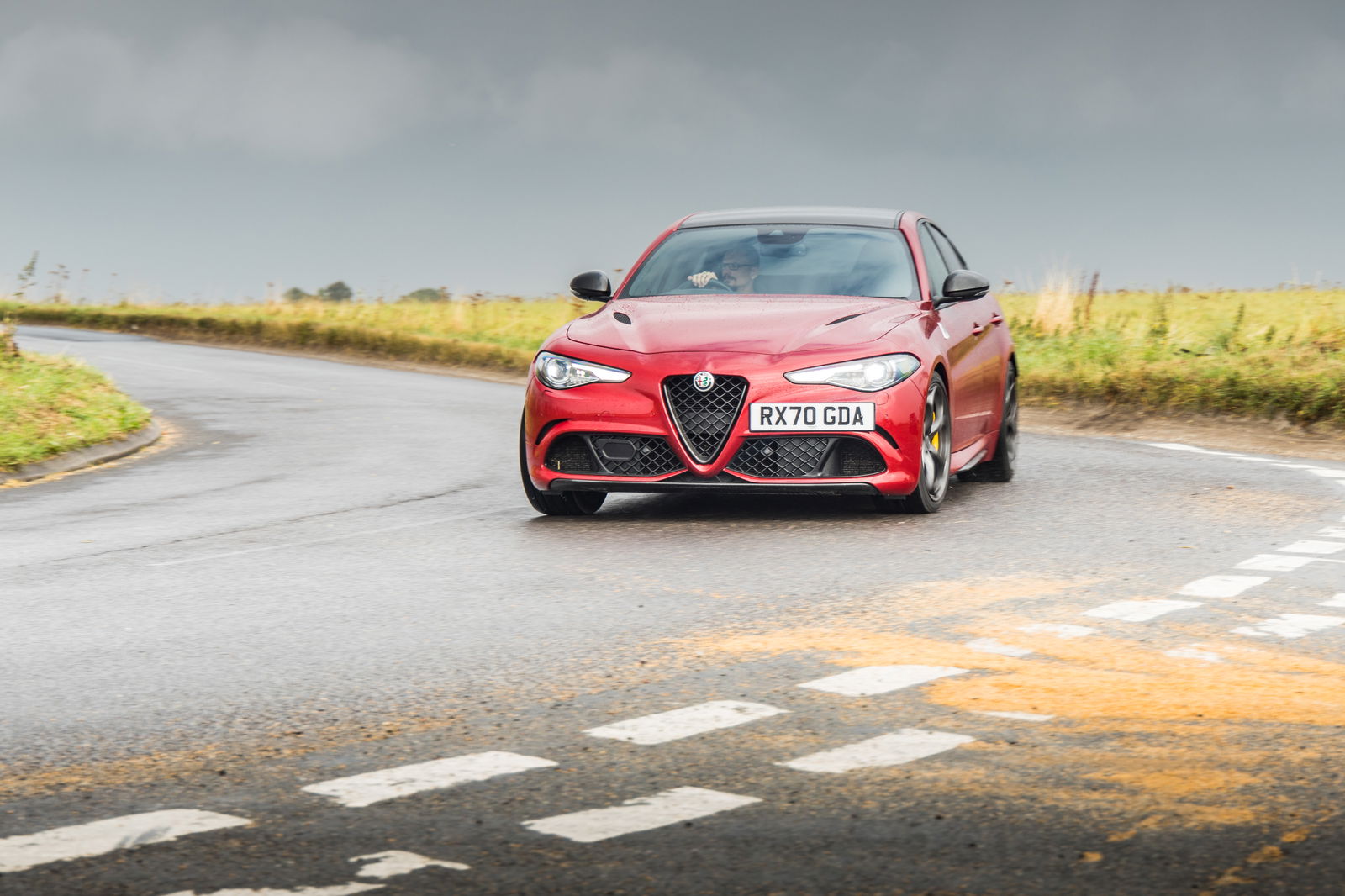
It’s perhaps this you miss most when getting back into the Quadrifoglio, closely followed by its inability to handle fast changes of direction quite so neatly as the GTAm. Plus, it can feel a little vague when stepping out at the rear, meaning there’s not as much forewarning as you’d like before you need to do something about it. This is still present to some extent in the GTAm, but on the whole, it offers a much greater sense of connection.
It also provides a whole lot more traction at the rear, while the Quadrifoglio struggles with its 503bhp output even in the dry. Set to either Normal or Dynamic, the traction control takes away a great deal of the power when you’re accelerating from a standstill, weirdly electing not to tell you it’s doing so with the usual flickering TC light. There’s no ‘ESP Sport’ setting here to partially disengage the electronic stuff as there is on pretty much every other performance car going - your only option is to switch to ‘Race’ which bins all of that off entirely.
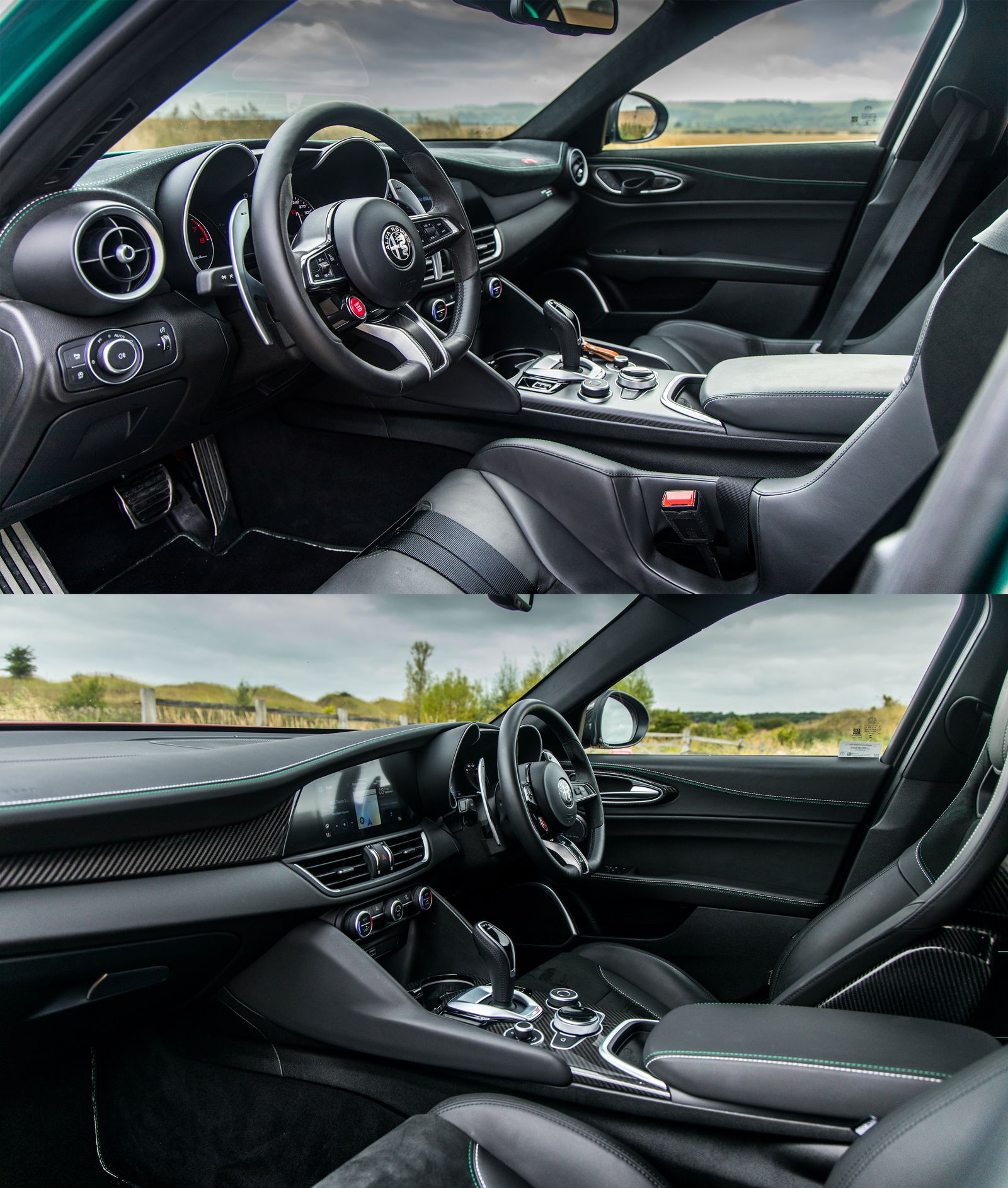
This opens up a whole world of wheelspin, but in the GTAm, you can opt for Race in confidence that the stickier Michelins will bite much more convincingly, allowing the Giulia to make use of every one of its 533 brake horsepowers. Plus, when set to dynamic, the GTAm’s tweaked TC setup isn’t anything like as stringent as the Quadrifoglio’s, rarely frustrating.
After spending a few hours switching between the two, it’s clear the GTAm justifies its lofty premium. And that’s without taking them on track to feel the full effect of the added downforce. The GTAm’s core building blocks might be the same as the Quadrifoglio’s, but the changes are big enough and sufficiently well-executed to transform the driving experience far beyond what you’d normally expect from a super saloon. The buying public clearly agrees a GTAm is worth double the price - all units (500 total for both GTA and GTAm) sold out a few days ago, about 18 months before going on sale. I pessimistically predicted it’d take Alfa a lot longer to shift them all.
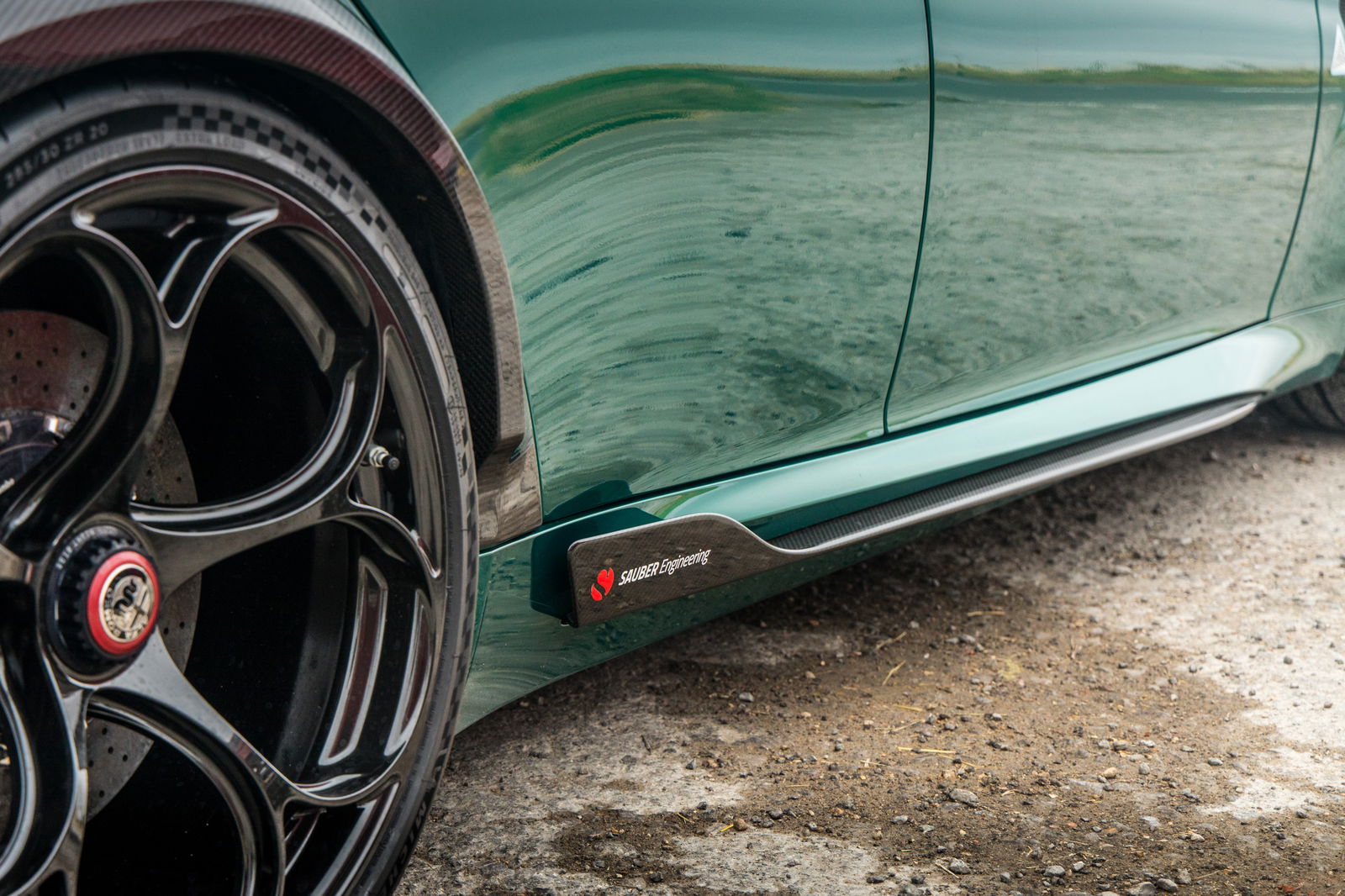
So, if you want a hot Giulia now, it has to be a Quadrifoglio. And that’s just fine by me. Yes, I’ve spent the last few paragraphs banging on about how it’s not anywhere near as sharp or exciting to drive as the GTAm, but that’s more a reflection on how extreme the more track-focused of the two is rather than the Q’s shortcomings. A comparison with the GTAm was never going to do it any favours. Until, that is, the quieter, more comfortable drive home.
The Quadrifoglio has a kind of duality the GTAm is much too focused for. It’s a fabulous cruiser, and yet when you peel off the motorway and stick it in Dynamic or Race, it’s every bit as exciting - if not slightly more so - than the very good new G80 BMW M3. It remains our super saloon of choice, and having seen what the platform is capable of in the GTAm has merely deepened that appreciation further.
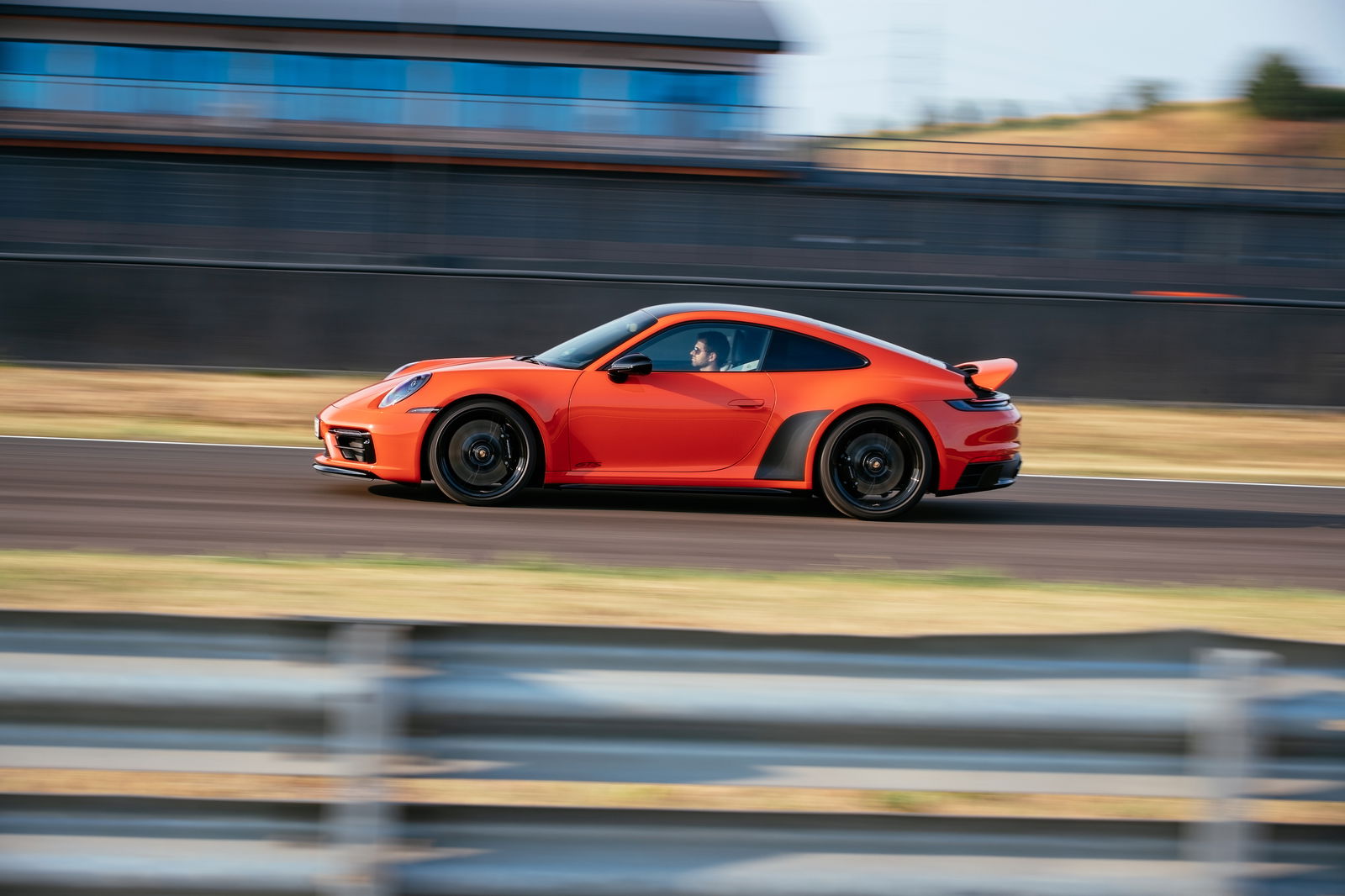
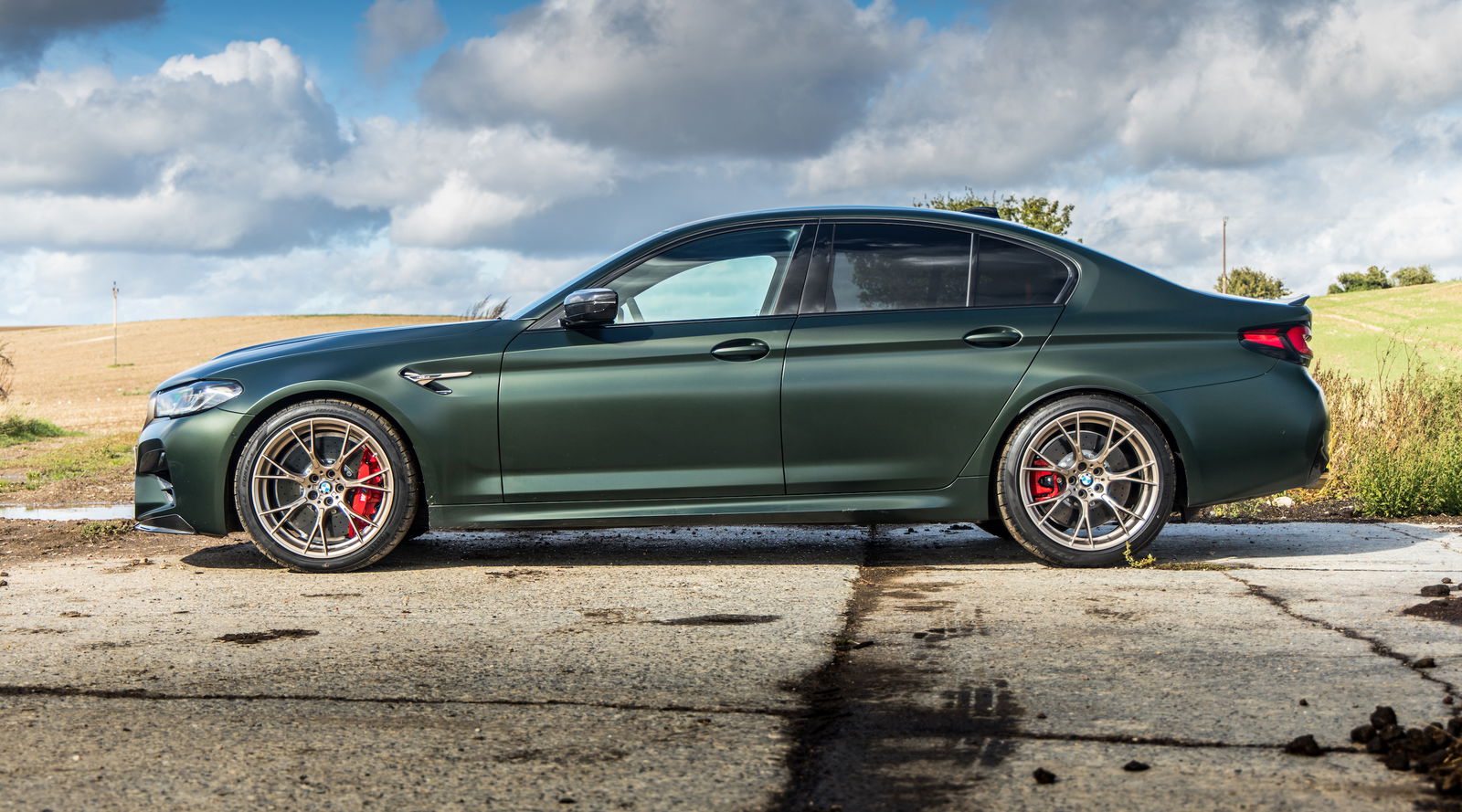

Comments
I honestly didn’t expect you to go that direction; I was expecting something similar to the comparison between the Megane RS Trophy and the Megane RS Trophy R.